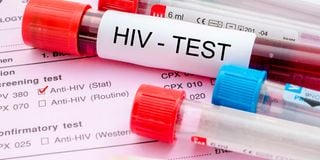Improve youth health initiatives

Out of the 17,680 new HIV infections among adults in Kenya, 41pc are aged between 25 and 34.
The world’s youth population is 1.2 billion, a number projected to grow by seven per cent to 1.3 billion by 2030.
In Africa, over 60 per cent of the population is below 25, and by 2030, the target date for achieving Sustainable Development Goals, young Africans are expected to make up 42 per cent of the world’s youth.
Kenya has an estimated population of 40 million, growing at about a million each year with 45 per cent below 15 years, and 19 per cent between 15 and 24, according to the Kenya National Bureau of Statistics.
Health is a priority in Kenya’s development agenda like the Vision 2030 and medium-term plan II 2014-2017, which states that the government will put emphasis on universal access to healthcare, preventive measures, and invest more in primary healthcare, maternal and child health.
It will also invest in medical research, pharmaceutical production and health tourism as a means of diversifying external revenue sources.
The government committed to address issues affecting young people and this is demonstrated by the fact that Kenya is a signatory to several international and regional human rights treaties and declarations.
These include International Conference On Population and Development (ICPD 25) commitments, Ministerial commitment on comprehensive sexuality education for adolescents and young people in Eastern and southern Africa (ESA 2013), Convection on the right of the child (CRC) ratified in 1990, SDG approved by the world summit on sustainable development goals as well as Maputo plan of action.
Kenya has a favourable policy and legal context. However, adolescents and young people still bear the brunt of the health burden due to limited access to sexual and reproductive health information, services and stigma and discrimination.
This is also due to limited involvement of young people within the policy formulation and implementation Programme. Approximately 29 per cent of all new HIV infections in Kenya are among adolescents and young people (Kenya HIV Estimate).
There is need to address other aspects that have a bearing on the health of young people. This includes access to information and reduction of age consent to HIV services and family planning. Because many of these factors are beyond their control and often lead to poor health outcomes.
They are more critical than access use of health care and this is caused by inadequate health insurance cover and to an extent it not cover sexual and reproductive health issues.
- Mr Shuaib is Executive Director at Epic Youth Organisation





